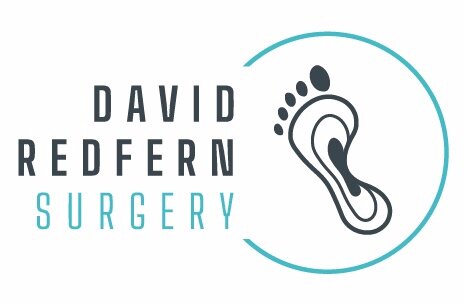Achilles Tendonitis
Problems with the Achilles tendon usually occur in one of two areas:
The region where the tendon attached to the heel bone (insertional tendinopthy)
or,
the middle region of the tendon (mid-substance tendinopathy)
It is key to first understand which of these two areas and which anatomical structures are involved in the problem before recommending the right treatment. As well as skilled examination, imaging such as x-rays, ultrasound and MRI may be helpful in this process and Mr Redfern will advise whether such investigations are needed.
Whether mid-substance or insertional tendinopathy patients often report symptoms that are worse first thing in the morning or after a period of rest (termed ‘start-up’ pain) and typically improves as the patient gets moving.
Shoes can cause pain with insertional tendinopthy where the heel counter rubs on the problematic area of the tendon and its attachment to the heel bone (calcaneum).
The Achilles tendon is a large and important tendon which lies behind the ankle. It connects the strong muscles in the calf to the heel bone (calcaneum) and helps to bend the ankle downwards which is important for propelling the body forwards when walking and running.
In some cases, surgery is required to adequately treat the problem and the exact nature of such surgery depends on the features of the tendon and the underlying mechanics.
Insertional tendonitis (tendinopathy) causes pain in the back of the heel region of the foot and is often seen in runners. Sometimes features of the patient’s heel anatomy are to blame, but there can be several contributing causes. If non-operative treatment fails to bring about improvement then surgery may be discussed. Removal of the bony prominence on the calcaneum (heel bone) and debridement (tidy up) of the tendon can be a successful operation. An alternative modern approach pioneered by Mr Redfern involves using keyhole surgery to realign the heel without interfering with the Achilles tendon. The surgical options will be discussed with you.
Physiotherapy is the mainstay of initial treatment in most cases
Mid-substance Achilles tendinitis (tendinopathy) produces pain in the area of the tendon shown here usually approximately 6-8 cm above the heel
Mid-substance tendonitis (tendinopathy) presents as a painful swelling of the tendon usually about 6-8cm from its attachment on the heel bone. It is frequently seen in runners but it can follow un-accustomed increased activity. It can also follow a minor injury and can also rarely occur after taking specific antibiotics (Fluoroquinolones). Most cases will resolve with a variety of non-operative treatments including focused physiotherapy and shockwave therapy (ESWT). However, if this is not the case then surgery may be discussed. Surgery may involve removing a small area of the paratenon (lining / sheath of the tendon) and debriding (tidying up) the tendon itself. Sometimes the tension of the muscle pulling on the Achilles need to be adjusted surgically which can also be very helpful (gastrocnemius recession). Occasionally, a surgical tendon transfer (Flexor Hallucis Longus) is required, the results of which are also usually very successful. Mr Redfern was an early pioneer in developing less invasive techniques to perform this surgery and will discuss the best surgical option in each specific case.












